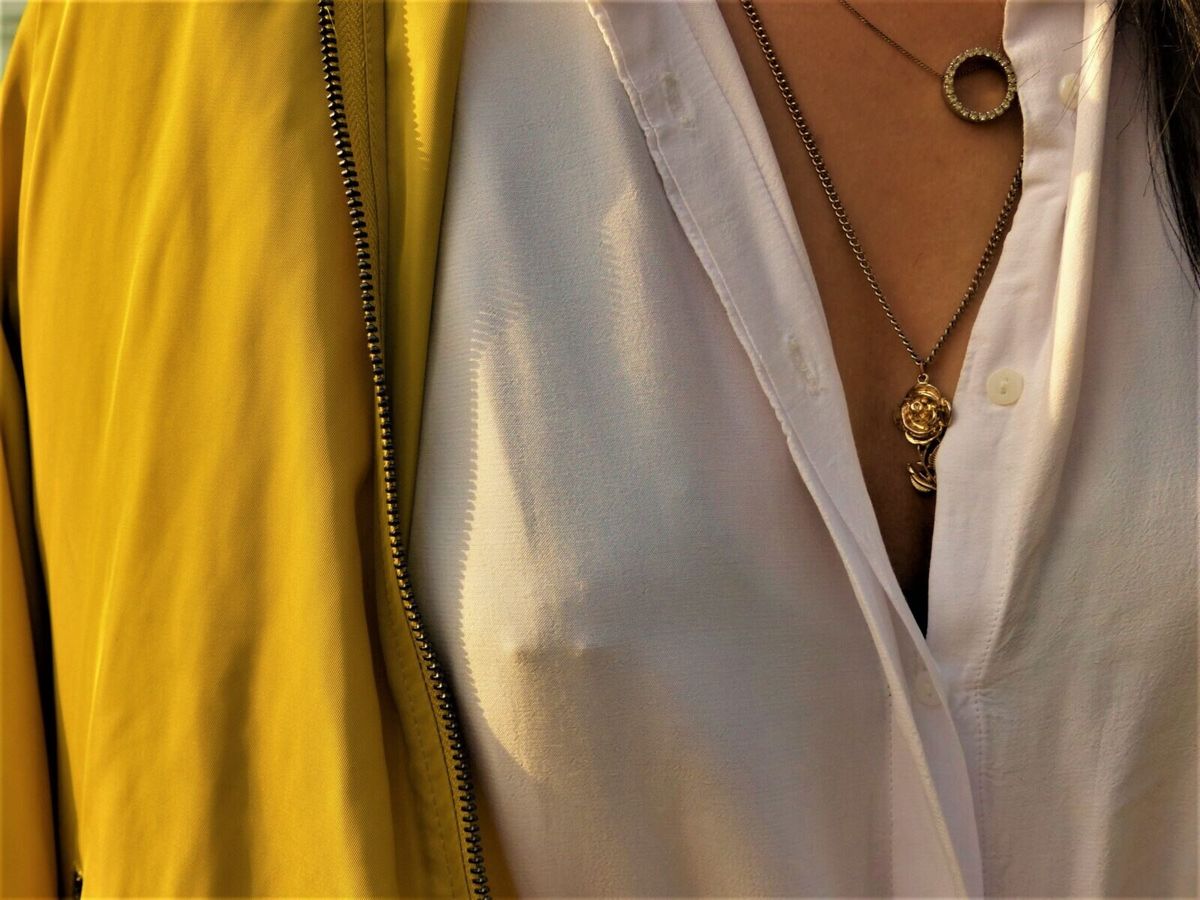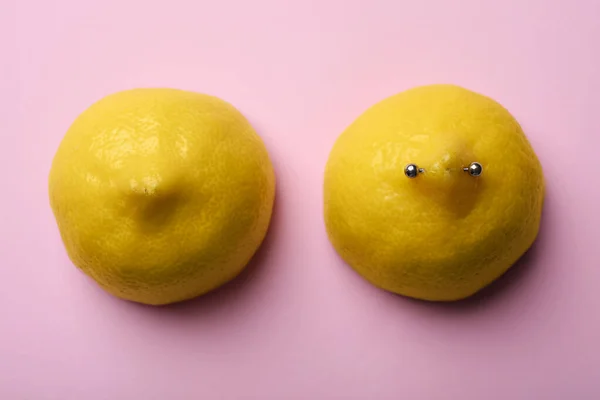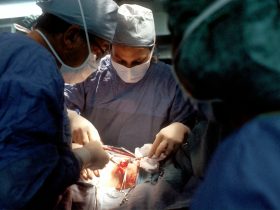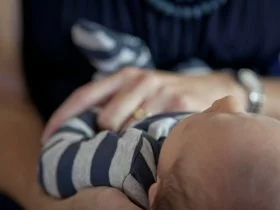Nipple piercings have become very popular in the past few years. If you have nipple piercings, it is only logical that you ask do nipple piercings affect breastfeeding. Any responsible woman and mother would do so. Or maybe, you are thinking of getting your nipples pierced, and you want to know what will that mean in the future.
Today, we will discuss all aspects of nipple piercing and how it can affect you and your baby.
Reader's Roadmap
Does The Type Of Piercing Make A Difference?
The risk and challenges of nipple piercings remain the same. No matter if you have rings, studs, or if you have pierced the nipples horizontally, vertically, or diagonally, there is not much of a difference.
The only thing we can say is that good quality stainless steel or gold-plated nipple piercing jewelry can help you avoid infection.
Another way to reduce the chances of infection is to make sure your nipple piercings heal completely before you breastfeed your baby.

Is It Safe To Breastfeed With Nipple Piercings?
This depends on whether you are breastfeeding with holes from previous piercings or with jewelry still in place. In any case, nipple piercings can impact breastfeeding for the mother and the baby.
For the expectant mother, some concerns include nerve damage that impacts the milk ejection reflex or scarring that obstructs the milk flow.
Generally speaking, the longer the time since the piercings were initially placed and the birth of the baby, the better the outcome.
We have to be honest, breastfeeding with piercings in place can make it difficult for the baby to latch on correctly. This can increase the risk of choking if the jewelry becomes loose. Your infant baby may also experience damage to the soft tissue inside the mouth from the jewelry.
Then, we have to mention that holes caused by the jewelry can lead to a faster milk flow. Some infants may struggle with the faster flow and cannot manage it.
Therefore, it is better to completely remove any nipple jewelry until you wean your baby. Whether that is six months, six weeks, one year, or a longer period, it depends on you.
Can You Remove Jewelry Only During Breastfeeding Sessions?
Some mothers choose to remove their nipple jewelry during a breastfeeding session. If that is your choice, make sure to wash your hands before removing jewelry and reinserting jewelry. This way, you keep the jewelry clean and prevent any infection in your nipples.
A nipple infection can lead to mastitis or illness in your infant.
Is It Safe To Get Piercings While Breastfeeding?
If you do not have nipple piercing jewelry before you give birth, you should definitely avoid getting them after you deliver your baby.
Piercing a breastfeeding mother or a pregnant mother carries huge risks. For starters, nipples need time to heal properly. Mothers should wait until 3 to 4 months after weaning before they get nipple piercings.
Why? Because hormonal changes during breastfeeding can affect the healing process. Yes, professional piercers might give you a waiver to sign if you want to get piercings, but that is your own risk.
Nipples can be pierced horizontally, vertically, diagonally, or any combination of the above.
What Issues Can Nipple Piercing Cause?
There are a few challenges you have to be aware of if you want to breastfeed with nipple jewelry in place. The key challenges include milk supply, feeding issues, and a higher risk of infection. Let’s talk about each of them separately.
Milk Supply
Now, unless there is an infection, pierced nipples should not damage milk production. Breast milk is produced in the mammary glands. They are located in the breast tissue behind the nipple.
But while there might not be challenges to a lower milk supply, there are other milk supply challenges. Mainly, with the way the baby receives milk.
Nipples can result in poor attachment and latch. Because of the piercing in the way, babies might come on and off the breast frequently. They are also slurping, gagging, and leaking milk. These are all signs you HAVE to remove the nipple jewelry.
Ability To Feed
Because the baby has challenges latching properly, it affects the quality of their feed. As we said before, holes because of piercing can lead to a faster milk flow. This can be a struggle for some babies to manage. They cannot drink fast enough to manage the extra breast milk.
You can help your baby by using a laidback or side breastfeeding position and extra nursing pads. These will catch excess milk.
Choking Hazard
Most importantly, nipple piercings can easily become loose, dislodge, and end up where they are not supposed to. For example, in your baby’s mouth. They can even get stuck in their throat, which will most likely create a choking hazard.
Any sharp jewelry can damage the soft tissue inside your baby’s mouth. That includes gums, tongue, and/or palate.
Mastitis And Other Challenges
Nipple piercings can lead to potential breast problems such as mastitis. It is a type of inflammation that develops because of a blocked milk duct. It can also happen when you have a bacterial infection in the breast.
One of the most common is a staph infection, and symptoms include redness, swelling, and breast soreness. Staph bacteria is something you normally find on your skin, and mastitis develops when you frequently touch the piercing site with your hands.
A breast abscess is another problem that can occur due to a bacterial infection. It can cause a painful and swollen pus-filled lump.
Mastitis can improve on its own, but it is better that you take antibiotics to treat the breast infection. And we know antibiotics are not recommended during pregnancy and breastfeeding.

When Can You Get A Nipple Piercing?
Generally speaking, it takes between 6 to 12 months for a nipple piercing to fully heal. That means you should wait until the piercing fully heals before breastfeeding.
In other words, if you want to get nipple piercings and expect to become a mother soon, make sure you have a period of 6 to 12 months in between.
Or, you can just wait until your baby is fully weaned and then get some piercings.
Piercings On Other Areas Of The Breast
Piercing the areola, which is the dark area around the nipple, or the surrounding breast tissue can pose even more challenges and problems. If the piercing cuts into the milk duct, it can alter the flow of breast milk.
And when your milk is not able to flow out, you can experience plugged milk ducts. Piercing also affects the nerves around the areola, and interferes with the let-down reflex.
How To Breastfeed Safely With Nipple Piercings?
We talked about do nipple piercings affect breastfeeding. Well, what if you have them and you want to make sure to safely feed your baby? Well, there is a way. Pierced parents need to take extra precautions when it comes to feeding their babies.
We have to note that infections occur in 10 to 20 percent of nipple piercings. So, first and foremost, make sure you are on top of your hygiene when handling piercings before and after each session. This can help you avoid breast infections.
That means washing your hands and the jewelry thoroughly with warm water and unscented soap. Also, make sure to sterilize your pierced skin using a natural antiseptic. That can be either sea salt spray, or something else. Sterilize the skin before removing and re-inserting your piercings.
During the entire process, keep an eye on early signs of infections. These include increased pain, odor, fever, or discharge from the piercing site.
You can also consider taking piercings out for the entire duration of your planned nursing time. Yes, there is the risk of the piercings closing up, but it is the safest option for your baby.
If you decide not to remove your nipple piercings, make sure to check they are nice and tight in place before you place your baby on the breast.







Leave a Reply
View Comments